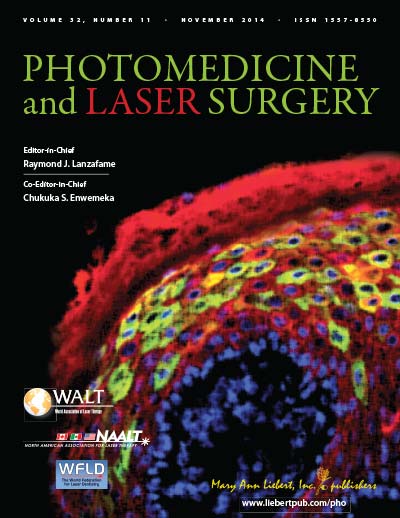Influence of Low-Level Laser on Orthodontic Movement & Pain Control in Humans

Marineˆ s Vieira S. Sousa, DDs, MSc, PhD,1 Arnaldo Pinzan, DDS, MSc, PhD,1
Alberto Consolaro, DDS, MSc, PhD,2 Jose´ Fernando Castanhas Henriques, DDS, MSc, PhD,1 and Marcos Roberto de Freitas, DDS, MSc, PhD1
View Full Printable Article
Abstract
Objective: The purpose of this study was to systematically review the literature to check the influence of low level laser (LLL) on orthodontic movement and pain control in humans, and what dose ranges are effective for pain control and increased speed of orthodontic movement. Methods: Computerized and manual searches were conducted up to January 4, 2014 for clinical studies that addressed these objectives. The selection criteria required that these studies (1) be prospective controlled clinical trials (CCT) and randomized clinical trials (RCT); (2) only use LLL in both infrared and visible red wavelengths, a laser with emission of constant wave; (3) have all main parameters of dose described, or at least conditions for calculation of the energy, in Joules; and (4) be published in Portuguese, English, or Spanish and be meta-analyses. Results: Seven studies met the eligibility criteria for orthodontic movement/LLL and 11 studies met the inclusion criteria for analgesia/LLL, totaling 18 prospective randomized studies that were selected for detailed analysis. The most common and effective energy input was the interval of 0.2–2.2 J per point/2–8 J per tooth at a frequency of application 1–5 days per month to accelerate the orthodontic movement. For pain control, the recommended energy per points varied from 1–2 J when only one tooth was irradiated to 0.5–2.25 J per point when all teeth in the dental arch were irradiated. Conclusions: LLL seems to have a demonstrated efficacy, but further studies are warranted to determine the best protocols with regard to energy and frequency.
Introduction
Even though there has been significant evolution in several fields in orthodontics in the last decades, the pain and xtended treatment time have been a constant concern for professionals and patients given this type of treatment.
Concerning the clinical implications, the faster tooth movement provided by laser therapy, and the consequent reduction in treatment time, are advantageous, because longer treatment times may result in a greater chance of alveolar bone loss, root resorptions, gingival changes, and greater probability of caries. Usually, orthodontic movement causes some type of painful sensitivity, especially in the first 4 days after activation, because the mechanical stimulus promoted by activation of the orthodontic appliance triggers an acute inflammatory response.8,9 For the patient, periods of acute inflammation are associated with pain and consequent reduction in the masticatory function.
In clinical practice, there is a near consensus that therapy with low-level laser (LLL) causes an analgesic effect. Therefore, the laser might be a great auxiliary in orthodontic treatment, because fear of pain is among the main factors precluding many patients from seeking treatment. In the scientific literature, few clinical studies have investigated the influence of LLL on the rate of orthodontic movement and pain control. With regard to orthodontic movement, most studies evaluated the influence of LLL on the initial retraction of canines over a period of *4 months. Only one study evaluated the influence of LLL in reducing overall treatment time..... Read Full Printable Article
Conclusions
The pain and extended treatment time are the two main complaints of patients undergoing orthodontic treatment. In response to these two main complaints, LLL seems to have a demonstrated efficacy; also, it is a method with simple application, is painless, does not present side effects, and has very few contraindications; however, to achieve positive results, It is necessary to use the correct dosimetry, because LLL is dose dependent.
Back to Clinical Articles
Laser Workshops & Courses
Find a BIOLASE Laser Dentist (See Epic Laser Users for Low Level Laser Therapy as described in article.)
.png)
